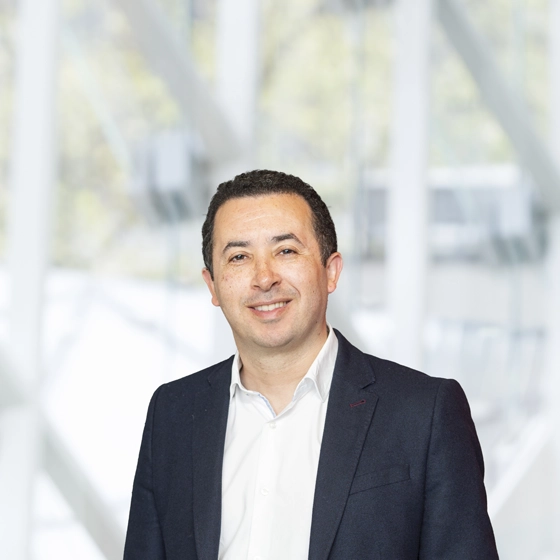Authors


The UK Government made dramatic changes to the taxation of foreign nationals living in the UK ‘non-doms’ - by abolishing the longstanding remittance basis regime and reforming the application of inheritance tax. The remittance basis was replaced with a new residence-based test known as the foreign income and gains (FIG) regime. Read about the changing rules for non-doms and what to do now.
The FIG regime is available to anyone who has been non-UK resident for at least the previous ten tax years – so even individuals originally born in the UK can use it. It applies to you for a period of four years starting from 6 April 2025, or the first tax year in which you become UK resident if earlier. If you qualify, and had already been tax resident in the UK for less than four tax years on 6 April 2025, you will be able to use the FIG regime for any remainder of your four-year period. If you want to become UK tax resident (or don’t), it is best to understand the rules that determine the date you become resident for tax purposes. Learn more about the statutory residence test and coming to the UK here.
During this four-year period, you will not be subject to UK tax on your foreign income and gains, nor on distributions from non-resident trusts - these funds can be brought into the UK freely without attracting a tax charge. Once the four-year period is over, you will be taxed on your worldwide income and gains in accordance with the normal tax rules for UK residents.
You will need to make a claim for the FIG regime to apply, and it is necessary to ‘nominate’ all sources of foreign income and gains that you wish the rules to apply to. You will need to make separate claims for income and gains. By opting into the FIG regime, you will lose your entitlement to the normal income tax personal allowances and annual exemption for capital gains tax that usually apply for UK resident taxpayers.
Many other countries have tax incentives to attract wealthy individuals to relocate. As ever, it is important to first consider your lifestyle and family objectives before considering possible tax benefits of relocation.
|
| To qualify | Annual charge | Duration | Benefit |
UK | FIG | Non-UK resident for prior ten years | No | Four years | Foreign income and gains exempt
|
Switzerland | Forfait | Non-Swiss national, non-resident for ten years and not working in Switzerland
| Yes – individually agreed subject to a minimum | Open | Annual fee (which can vary) |
Spain | Non-Resident Income Tax | Non-resident for prior five years and having a qualifying purpose in Spain
| No | Ten years | Being taxed as a non-resident |
Portugal | Tax incentive for scientific research and innovation
| Non-resident for prior five years and having a qualifying purpose in Portugal
| No | Ten years | Taxable on Portuguese sources only and at 20% flat rate of tax |
Malta | Remittance basis
| Non-domiciled in Malta | No | Open | Taxable on Maltese source income and gains and foreign income and gains if remitted
|
Italy | Lump sum | Non-resident for prior nine years | EUR 200,000 | 15 years | Flat tax covers non-Italian income
|
Despite the abolition of the non-dom regime, Overseas Workdays Relief (OWR) remains available for internationally mobile employees (IMEs) beyond 6 April 2025. It is aligned with the same four-year period that the FIG regime can be accessed.
New IMEs arriving in the UK after 6 April 2025 are eligible if they have not been resident in the UK for the 10 previous UK tax years, even if they are repatriating Brits. There is no requirement to have sufficient earnings paid and retained offshore to claim OWR, but an annual financial limit applies: the lower of 30% of qualifying employment income or £300k per tax year. Transitional reliefs apply for those who arrived pre-April 2025 but are only part way through the previous three-year period of OWR eligibility.
Although employers are assured of a ‘simpler’ process to notify HMRC that they wish to operate PAYE only on the portion of earnings relating to UK workdays for employees claiming OWR, there are new complexities. The change to a ‘process now, check later’ approach means HMRC could retroactively direct employers to amend the portion of earnings to which PAYE is applied. Also, the new financial limit and the way it applies to incentive payments for performance periods spanning earlier UK tax years, may require employers to simultaneously monitor current and prior tax year limits. ‘Trailing income’ (equity and bonus) part-earned prior to the new rules will still need to be paid offshore into a qualifying account to benefit from OWR.
The exemption to travel costs incurred by foreign national employees that are funded by employers when they come to the UK, and periodic travel back to their home country, has been reduced to 4 tax years from 5 April 2025.
The FIG regime applies to employees who were born in the UK but have been absent from the UK for 10 tax years or more. Employees with pre-April 2025 earnings period incentive awards should note that they will remain subject to the old remittance basis rules. They will also have to become familiar with how the annual financial limits will operate. For highly remunerated executives earning over the financial limit, the consequence of triggering UK tax residency will be more significant than in the past.
The most significant adverse impact to employers is the annual financial limit that will apply on OWR for highly remunerated executives that are ‘tax equalised’ on assignments to the UK by their employer; this will result in additional cost to the employer. HMRC will still allow notifications, so employers can operate PAYE on a reduced percentage of earnings for employees eligible for OWR - previously known as a ‘section 690’.
Since OWR is still available for four years, there is no increased UK tax burden for employers of tax equalised or partially tax protected employees whose earnings do not exceed the annual financial limit. The employer tax burden may, in fact, decrease due to the removal of the restriction on bringing foreign earnings to the UK.
Given the complexities of the new rules, many internationally mobile employees will expect their employer to facilitate and or fund tax guidance on how the changes impact them. Equally, it is in the employer’s interests to review the impact of the new rules on their current and future internationally mobile employees to ensure that any issues are minimised.
We recommend that anyone considering moving to the UK gets bespoke advice in advance. Get in touch with an expert BDO adviser to discuss your own or your client’s options.

